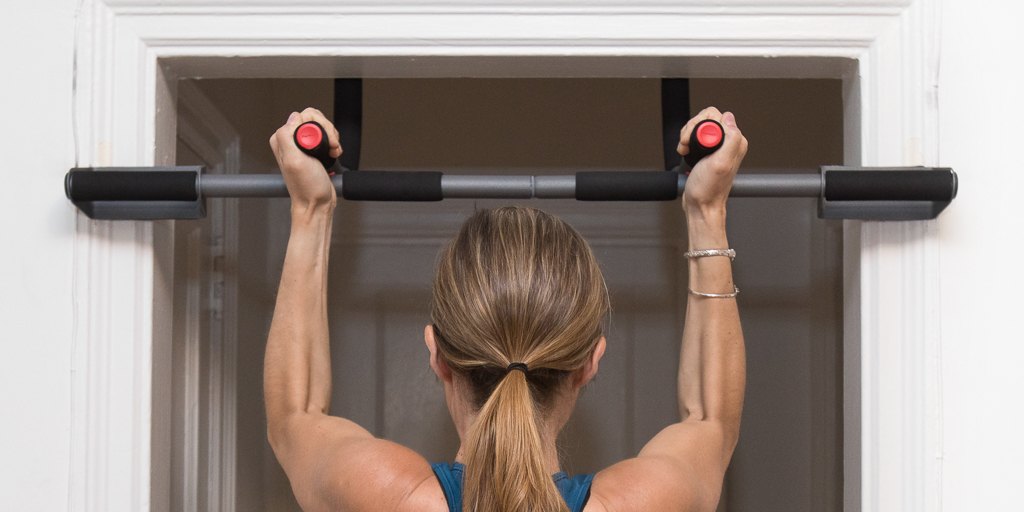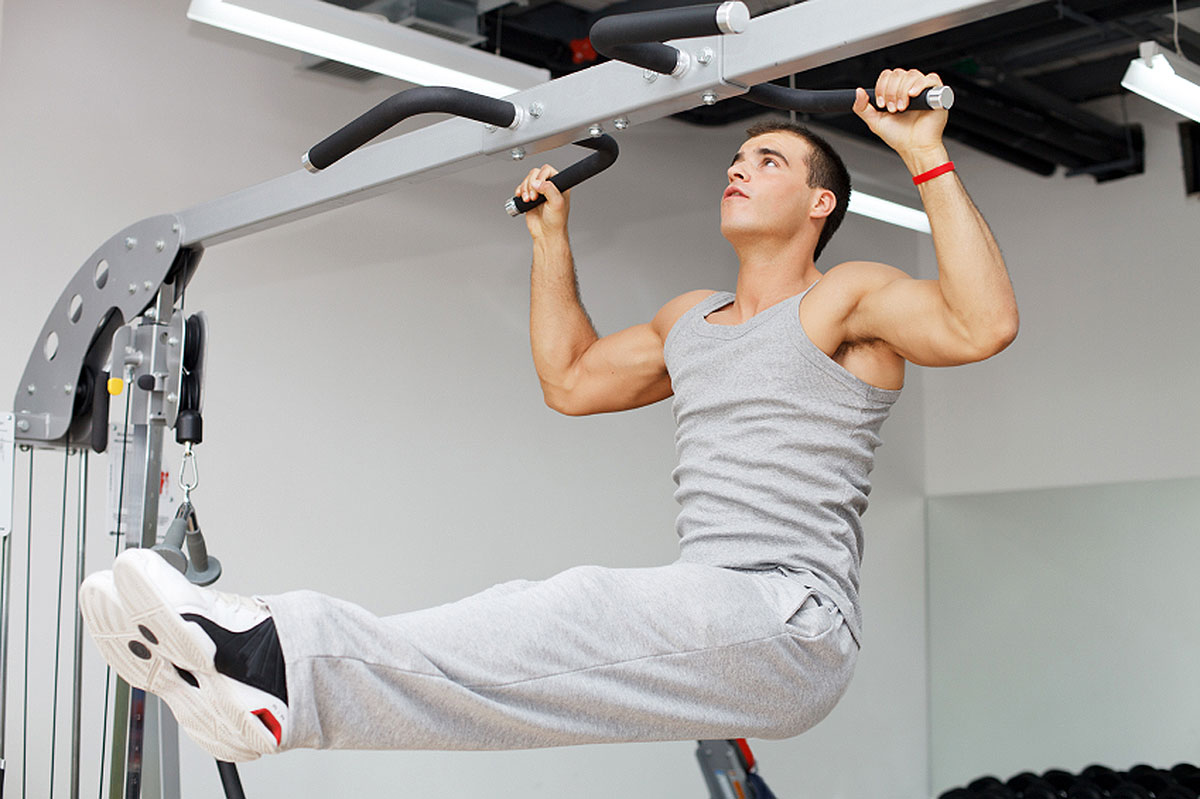Many people don’t understand the difference between these two types of exercises. For example, some trainers say that in pull-ups (pullups), the chest should rise to the level of the crossbar, while others believe that only the chin should be higher than the crossbar. In Europe, chinups have become synonymous with regular pull-ups. In the United States—these terms are used interchangeably. I’ve met former soccer players who swear that pull-ups are performed with a grip to themselves, and pull-ups to the chin-from themselves. There doesn’t seem to be a general consensus. Not surprisingly, many are confused.
In my system, a pull-up is any lifting of the hands of one’s own body up against gravity. You will find a similar definition in most sources. But do not attach much importance to the terms, much more important is the technique of performing the exercise.
Ideal range of motion
The ideal lifting level is from almost straight arms to the point where your chin is above the bar. If you go higher — so that your chest is higher than the crossbar-most of the load will pass from the latissimus dorsi muscle to the weak muscles between the shoulders and shoulder blades. And this situation is traumatic. That’s why it’s best not to go much higher than your chin.
Slightly bent elbows in a pull-up are important for two reasons. First, the extra load is removed from the elbows, preventing overstretching of the joints. Secondly, a certain inertia moment is created when moving up, which makes it easier to climb. No matter what the pull-up experts advise, never relax in the lower position or straighten your arms to the end. Of course, by straightening your arms, you will relax the muscles, but this will strain the joints. This is not exactly what we need. Only by keeping your elbows slightly bent (about 10 degrees in the lower position) and pulling up only from this position, you can build up your muscles. Keep your muscles taut.
“Hard” shoulders
All hanging exercises load the joints of the hands, so it is important to know how to protect the shoulders and elbows from damage.
The shoulder joint is similar to a hinge — it has a spherical shape and provides the greatest range of movement: from rotation to flexion. But for an increased amount of movement, you have to pay with reduced stability. If you relax your shoulders while hanging from the crossbar, the joint stretches and is held in place only by inflexible ligaments. Such actions not only cause ligament damage, but also in some cases lead to partial or complete dislocation of the shoulder. It may not happen often, but this happens, especially if the athlete has already been injured. Therefore, in pull-ups, you should tightly tighten the muscles, protecting the ligaments and avoiding unnatural bends in the elbows and shoulders.
Exercises in which the body hangs in the air, especially pull-ups with lifting legs, are extremely effective, so it is important to master a good technique for performing them from the very beginning of training. Keeping your shoulders stiff isn’t that hard. To do this, you just need to lower your shoulder joints about five centimeters. Look at the picture — can you see the difference? This trick is easy to do if you strain the latissimus dorsi muscles. Keep your entire upper body in tension during the exercise, and you will succeed.
Hard grip
Another controversial point in pull—ups is the grip. What is the best hand position on the crossbar-straight grip (fingers away from you), reverse (fingers towards you) or upper (thumbs towards you)!
Let’s start by looking at an important aspect of the movement — pronation. This term is used by kinesiologists, and it means “rotation”, “turnover”. In the context of push-ups, he describes the phenomenon of turning your palms down as you bring them closer to your body.
The closer the palms are to the body, the more they rotate. This is a very small natural human movement. It may seem very small and usually does not interfere with the performance of standard pull-ups, but it becomes important as the exercises become more complex.
At first, perform pull-ups with a grip that is convenient for you personally. But a straight grip (with your fingers away from you) is preferable for many, so all descriptions of exercises are given taking into account a straight grip. Reverse grip is also acceptable. As you master the technique and progress through the difficulty levels (especially in full pull-ups) , you will feel that the position of the hands will no longer be comfortable.
Experiment with different grips. As a rule, if you have a strong bicep, then with a reverse grip it will be easier to pull up. Choose the position that is convenient for you.
The most advanced technique for performing this exercise is pull — ups on gymnastic rings. Gymnasts usually train on them. Rings are ideal for performing pull-ups because they allow the hand to move naturally while moving.
“Buildup”
Remember that pull-ups are performed using force, not inertia. But if the strength is still not enough, anyone will certainly want to help themselves with their feet. To do this, there is a special deceptive technique — pumping.
Swinging loosens the joints and turns pull-ups into an illusion of incredible strength and shape. This is the main reason why novice athletes should never use this technique. Be sure to keep the perfect shape and trajectory — two seconds up, one second at the top, two seconds down, one second at the bottom, and so on.
No moment of inertia. If you feel that it is difficult to perform further, it is better to lower yourself, rest and repeat the exercises without swinging.
Only after you master the technique and reach an advanced level without using the swing will you be able to help yourself-and use the moment of inertia carefully: do three or four clean pull-ups and then, gently swinging, do two or three more repetitions.
Only if these conditions are met, the build-up will help you overcome the natural barrier in the number of pull-ups and develop endurance. In any case, don’t sway when you don’t have to. This technique cannot be used more than once per set. And don’t even try to use the swing technique if you are a beginner.


